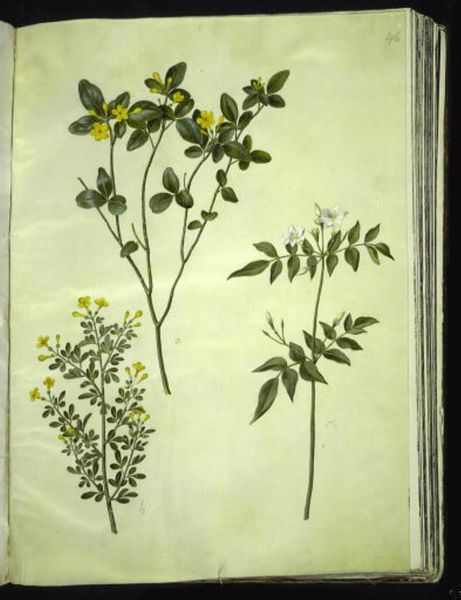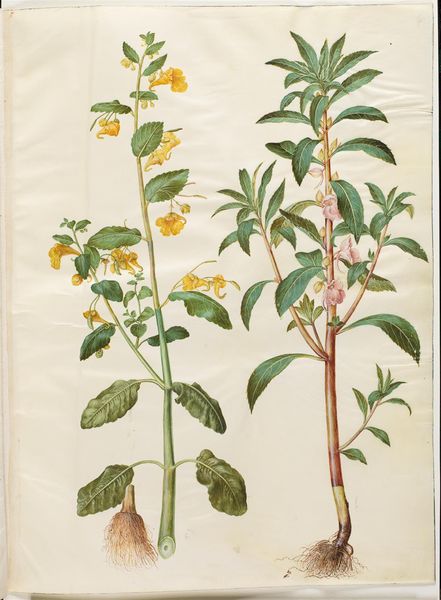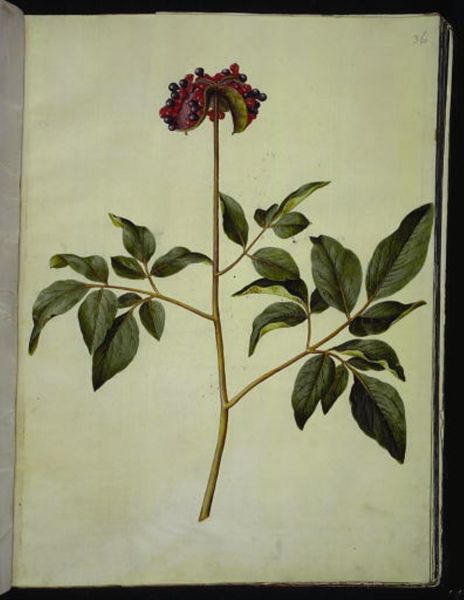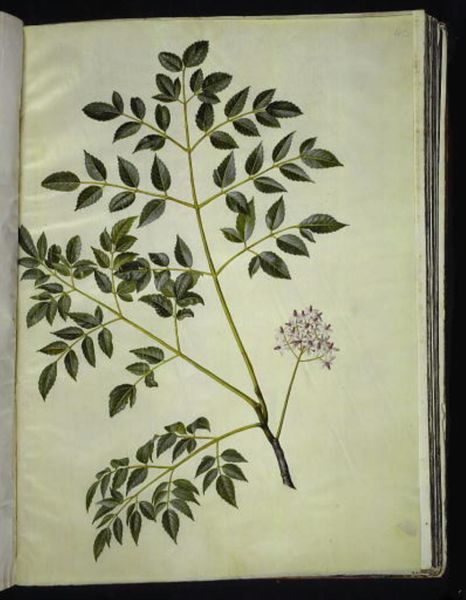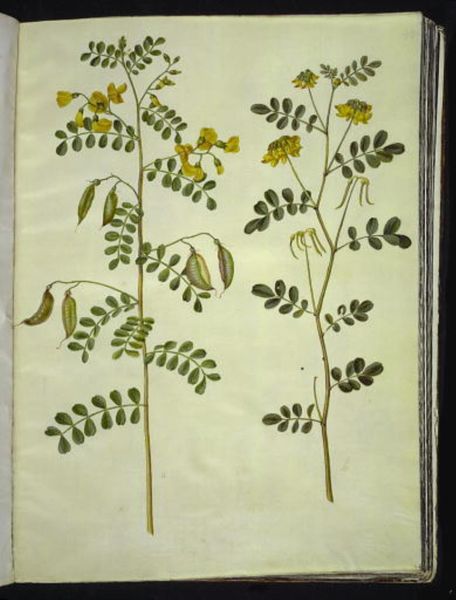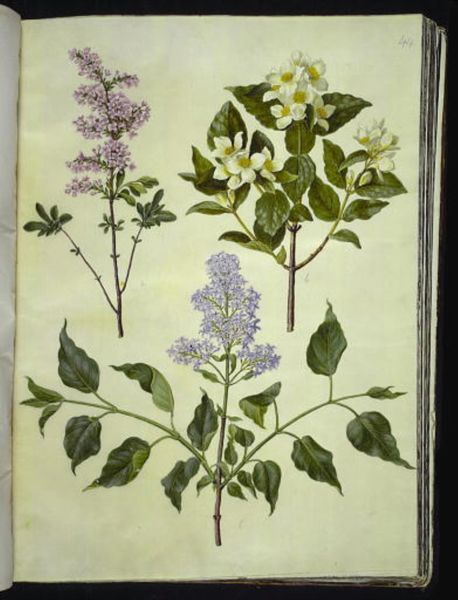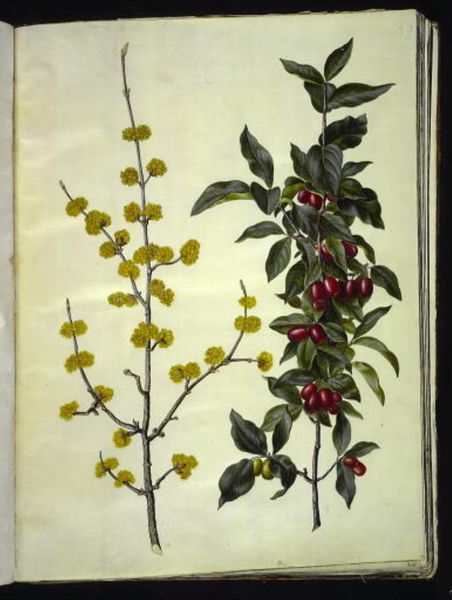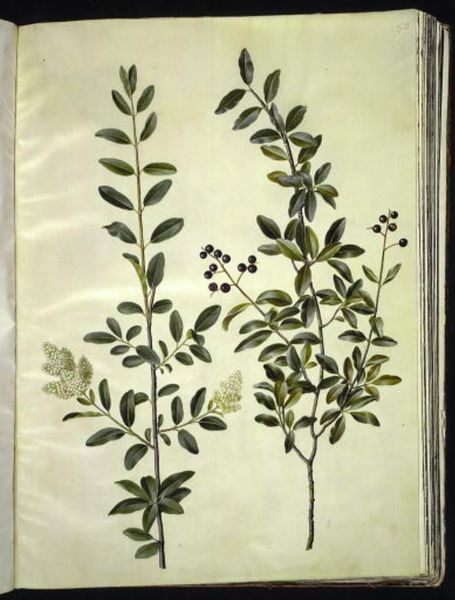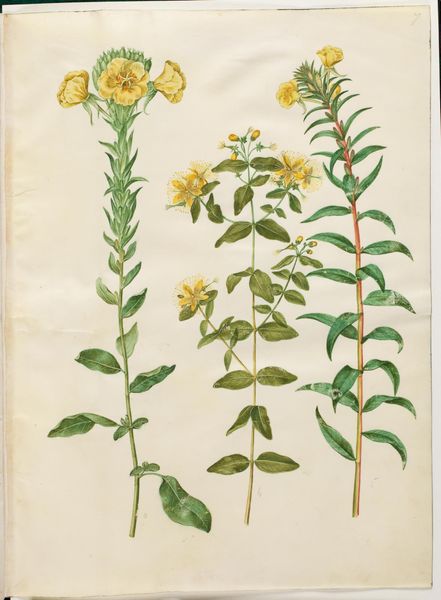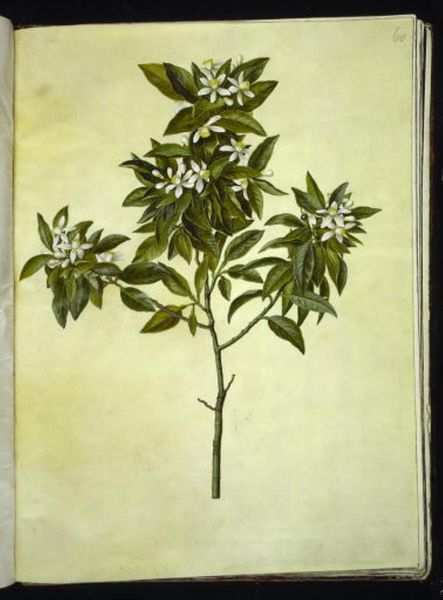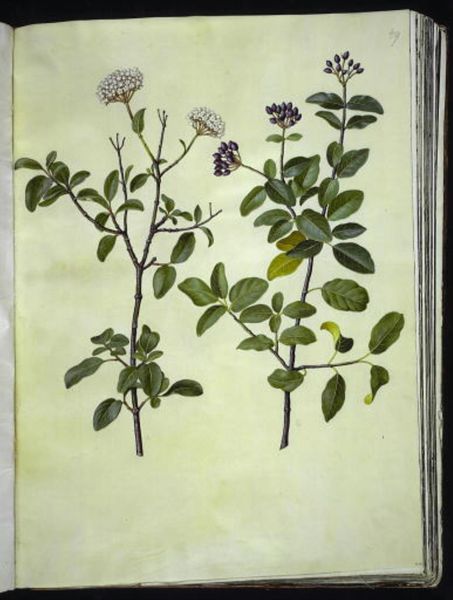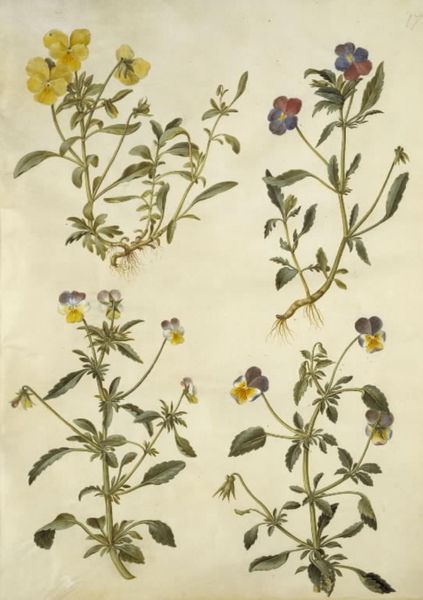
Phlomis fruticosa (almindelig løvehale); Salvia officinalis (læge-salvie) 1649 - 1659
0:00
0:00
drawing, coloured-pencil, gouache
#
drawing
#
coloured-pencil
#
ink painting
#
gouache
#
coloured pencil
#
botanical art
Dimensions: 505 mm (height) x 385 mm (width) (bladmaal)
Curator: Look at this delicate drawing from between 1649 and 1659, attributed to Hans Simon Holtzbecker. It’s a botanical study titled "Phlomis fruticosa; Salvia officinalis," currently held at the SMK in Copenhagen. The materials are listed as drawing, colored pencil, and gouache. Editor: It strikes me as incredibly serene. The precise lines, the muted palette, and the isolated presentation of each plant... there's a stillness that borders on melancholy. Curator: Indeed. Holtzbecker’s precise draftsmanship allows us to see the botanical structure with great clarity. Notice the use of line to create the subtle shifts in the planes of the leaves. There's a wonderful dialogue here between representation and abstraction. Editor: What I find interesting is how the choice of gouache over, say, oil, lends a matte finish. We're seeing the paper grain and the almost chalky texture of the pigment. It connects this botanical illustration less to the grand tradition of painting, and more to artisanal crafts, something created in service of, perhaps, herbalism or early pharmaceutical knowledge. Were these drawings commissioned or part of personal studies? That process dictates so much. Curator: Those questions certainly resonate here. While much of Holtzbecker’s history remains fragmented, the precision of line and subtle blending of colors creates, what I think, a very elegant formal arrangement, echoing the botanical classification systems that were developing at the time. Editor: It begs the question: were these plants being cultivated in controlled garden settings, specimens gathered for study, or sketches done in situ, out in the rough and tumble? Knowing how those leaves were foraged, ground and bound helps me grasp this piece of evidence of early scientific practice. Curator: It seems this object sits on the fascinating cusp between craft and early scientific treatise. The restrained execution adds to this dialogue about science meeting craft. Editor: Absolutely. This intersection between precision and earthy material connects with our desire for knowledge through making, grounding theory with tangible existence.
Comments
No comments
Be the first to comment and join the conversation on the ultimate creative platform.
